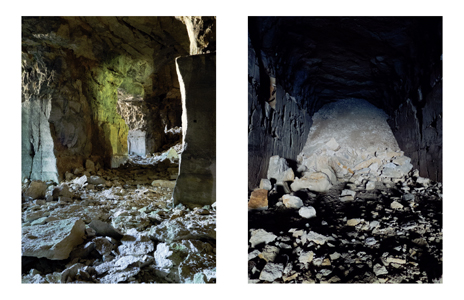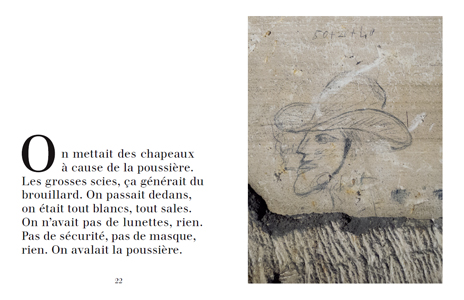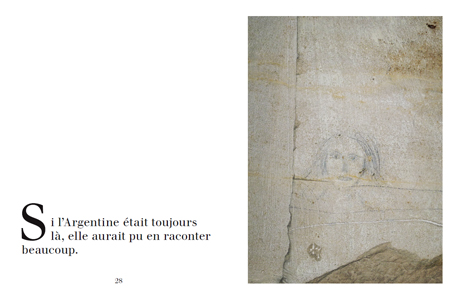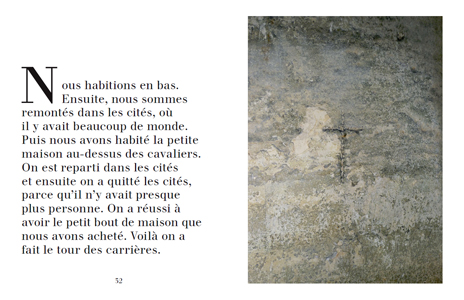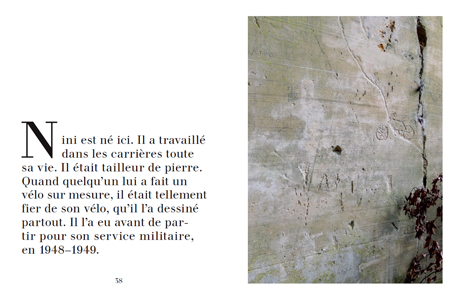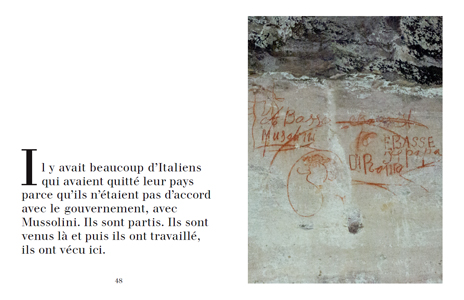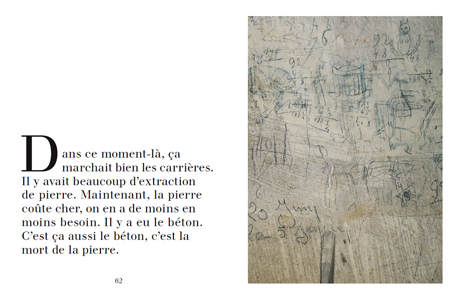Artist's book.
Euville originates from a commission requested by the Tourism Office and the Pays de Commercy Association of local authorities
(Meuse) within the framework of the
New Patrons program proposed by Fondation de France and the interpark cooperation project ‘Paysage Industriel', which links the regional natural parks of Lorraine, Monts d'Ardèche, Pilat and Vercors.
The work consists of three distinct sections. At first, the eye wanders over the artist's photographs of the interiors of old extraction galleries: walls of limestone and stones in subtle tones, the mysterious penumbra of partially banked-up passages, unreal architectures and lights. Halfway through, Pierre Briot and John Paul Streiff's text traces the daily life of a quarryman according to testimonies from witnesses who have since disappeared. It prefaces photographs of graffiti drawn in the galleries, a glimpse into the intimate and human aspects of every day life in the quarries. Some illustrate joyful fantasy; others are dreamy musings, meditation, and a reflection on their apparitional context. The style and the themes are varied: a mysterious bicycle drawn in several places around the gallery, a peremptory drawing of a bottle of wine, a delicate small boat, a man in a hat smoking a cigarette, a woman wearing a low chignon, columns of figures, symbols of political struggle…..Each photograph addresses a narrative constructed by Susanne Bürner during various visits to Euville and its surroundings. The choice of big characters in the layout of the mini -narratives suggests a collection of stories and images intended to play through the memoirs, rather than of a work of erudition. The relationship between text and image avoids straightforward illustration and gives breathing space and distance.
Euville deploys multiple visual links: of prehistoric art – the drawing reproduced on the cover recalls the numerous abstract symbols seen in painted cave decoration – to art and to conceptual drawing. Finally, the graphic conception borrows freely from history of art books made in the 1950's-1960's: the rigid cloth-bound cover, the classical unrolling of images, the consideration of detail within the ensemble and the attention paid to the quality of photographic reproductions. This is a purposeful loan that addresses the question of preserving and sharing these meditative commentaries, the emotional and aesthetic quality of graffiti dedicated to disappearance and its mysterious aura within the impressive context of old underground quarries.
Born 1970 in Ellwangen (Germany), Suzanne Bürner lives and works in Berlin.



